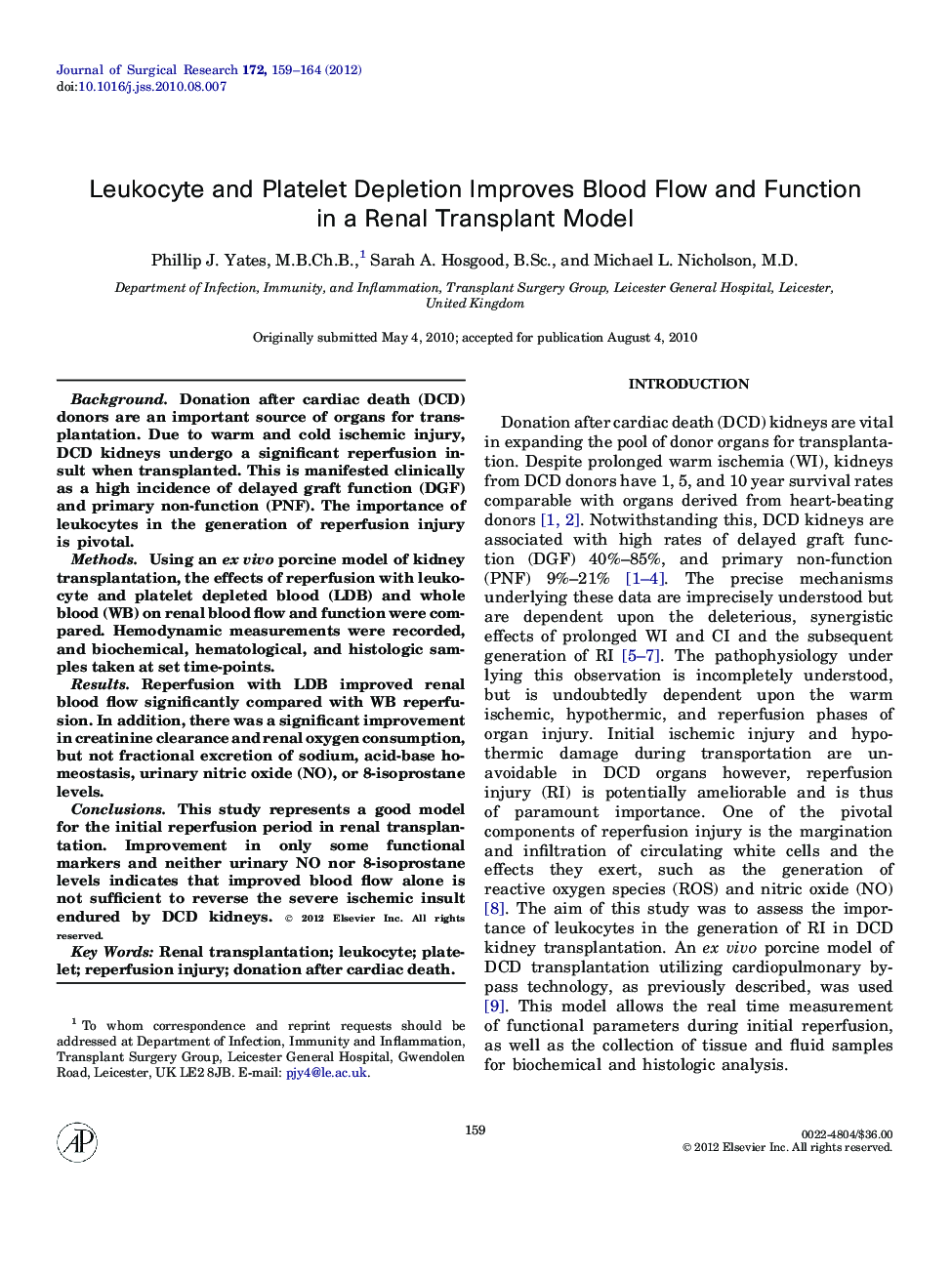| Article ID | Journal | Published Year | Pages | File Type |
|---|---|---|---|---|
| 4301997 | Journal of Surgical Research | 2012 | 6 Pages |
BackgroundDonation after cardiac death (DCD) donors are an important source of organs for transplantation. Due to warm and cold ischemic injury, DCD kidneys undergo a significant reperfusion insult when transplanted. This is manifested clinically as a high incidence of delayed graft function (DGF) and primary non-function (PNF). The importance of leukocytes in the generation of reperfusion injury is pivotal.MethodsUsing an ex vivo porcine model of kidney transplantation, the effects of reperfusion with leukocyte and platelet depleted blood (LDB) and whole blood (WB) on renal blood flow and function were compared. Hemodynamic measurements were recorded, and biochemical, hematological, and histologic samples taken at set time-points.ResultsReperfusion with LDB improved renal blood flow significantly compared with WB reperfusion. In addition, there was a significant improvement in creatinine clearance and renal oxygen consumption, but not fractional excretion of sodium, acid-base homeostasis, urinary nitric oxide (NO), or 8-isoprostane levels.ConclusionsThis study represents a good model for the initial reperfusion period in renal transplantation. Improvement in only some functional markers and neither urinary NO nor 8-isoprostane levels indicates that improved blood flow alone is not sufficient to reverse the severe ischemic insult endured by DCD kidneys.
